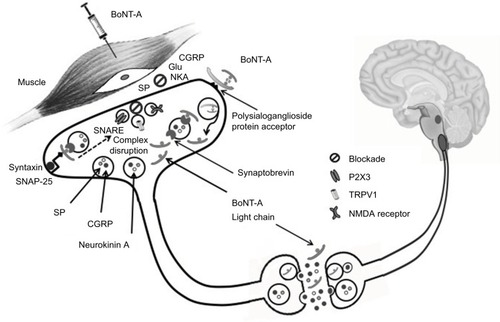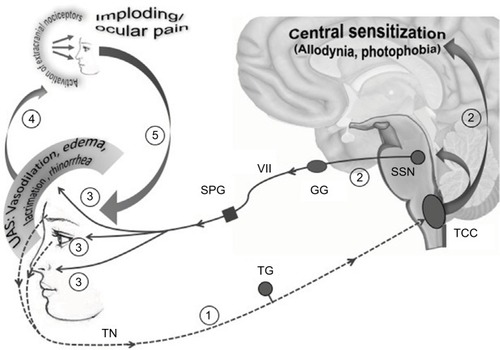Figures & data
Figure 1 BoNT-A in migraine: putative mechanisms of action.
Abbreviations: BoNT-A, onabotulinum toxin A; CGRP, calcitonin gene-related peptide; Glu, glutamate; NMDA, N-methy-D-aspartate; TRPV1, transient receptor potential vanilloid 1; NKA, Neurokinin A; SP, substance P; SNARE, soluble n-ethylmaleimide-sensitive factor attachment protein receptor; SNAP-25, synaptosomal-associated protein of 25 kDa.

Figure 2 Imploding/ocular pain might be a consequence of the trigemino-autonomic reflex activation: a hypothesis.
Abbreviations: TN, trigeminal nerve; SSN, superior salivatory nucleus; GG, geniculate ganglion; SPG, sphenopalatine; UAs, unilateral autonomic symptom; TCC, trigeminocervical complex; TG, trigeminal ganglion.

Table 1 BoNT-A in CM treatment: issues to be addressed
